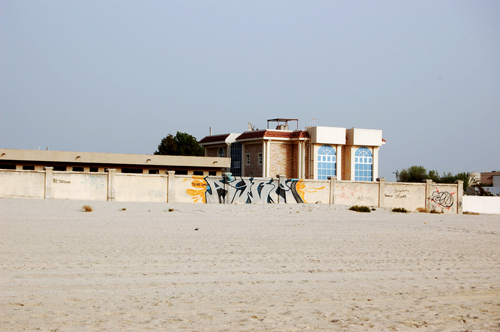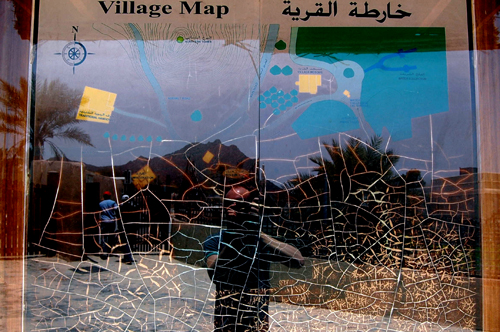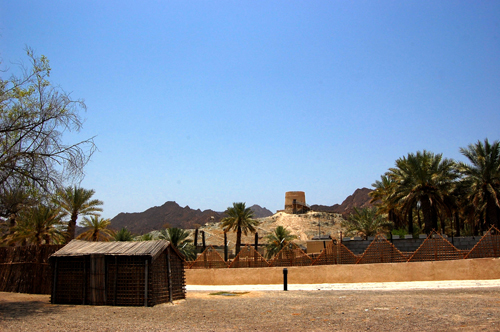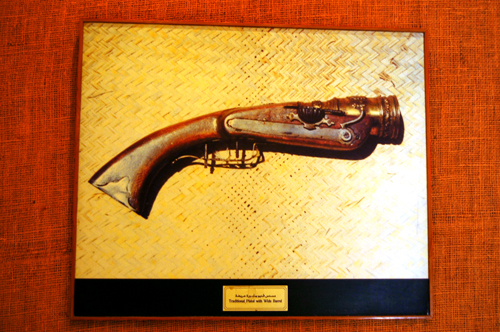I was reading yesterday this section (Chapter 9 – Two Images of Technology) in Murray Bookchin’s excellent study on the “emergence and dissolution of hierarchy.” It is so clear and so relevant that I would like to quote it here in some length. The lessons that are so undeniably prescient in the words below and which are so important to the success of our collective endeavor toward the proliferation of healthy societies in the 21st century are very sadly ignored by many today.
In Bookchin’s words are some very serious lessons about one of the most important choices that is being made by decision makers today: what is the portfolio of our near-term energy future and how are we going to build a strong new foundation for a sustainable, non-polluting infrastructural system that will allow our fast-growing population universal access to lives of quality and value in the decades to come?
If while reading this, one keeps in mind so many of the current topics of debate in popular culture, it begs to question so many of the basic assumptions that are majority departure points for all of these conversations. When we knowingly engage in activities that are harmful to the balance of our ecosystems in order that the near-term growth rate on our dividends can be maintained and/or in order that we might have access at the consumer level to inexpensive fashions and goods or creature comforts, we are doing so in violation of very deep moral traditions that have roots into all religions and systems of ethics out of which modernity was born. It is in essence a betrayal of the best of humanity to continue to squander our potentiality for good. The right path continues to present itself despite our best efforts to ignore it. What is certain is that it not the easy path. But what is also certain is that the one we are on right now is leading nowhere very good.
Bookchin begins by setting the recent historical stage of humanity’s relationship with technology:
In trying to examine technology and production, we encounter a curious paradox. We are deeply riven by a sense of promise about technical innovation, on the one hand, and by a thorough sense of disenchantment with its results, on the other. This dual attitude not only reflects a conflict in the popular ideologies concerning technology but also expresses strong doubts about the nature of modern technological development itself. We are puzzled that the very instruments our minds have conceived and our hands have created can be so easily turned against us, with disastrous results for our wellbeing—indeed, for our very survival as a species.
It is difficult for young people today to realize how anomalous such a conflict in technical orientation and imagery would have seemed only a few decades ago. Even such a wayward cult hero as Woody Guthrie once celebrated the huge dams and giant mills that have now earned so much opprobrium. The people whom Guthrie and his radical companions of the 1930’s addressed had a deep reverence for technology, specifically those skills and devices that we place under the rubric of “technics.” New machines, like artistic works, were objects of display that radiantly enraptured not only the connoisseur of futurism, the manufacturer, and the specialist, but the general public in all walks of life. Popular American utopias were unreeled in monumental technocratic images; the embodied power, a preening mastery of nature, physical gigantism, and dazzling mobility. The largely technical “New World of Tomorrow,” celebrated in the last of the truly great fairs—New York World’s Fair of 1939—fascinated millions of visitors with its message of human achievement and hope. In fact, technics had become as much a cultural artifact as a mechanical one. The early part of the century witnessed the emergence of an intensely social and messianic art (Futurism, Expressionism, the Bauhaus, to cite the most celebrated ones) that was overwhelmingly technological in its exhortations and in its derogation of more leisurely, reflective, craft-oriented, and organic traditions.
The hold of technics on the social imagery of that time was more fetishistic than rational. Even the First World War, which witnessed a massive use of the new technological armamentarium to slaughter millions of people, did not dispel this technical mythos. Only in the sequelae of the second of these worldwide conflicts, with all its terrifying results, did we begin to witness chilling doubts in the popular mind over the wisdom of technical innovation. Nuclear weaponry, perhaps more than any other single factor, has created a popular fear of a “technics-run-wild.” The 1960s began to exhibit a pronouncedly anti-technical bias of its own that has since turned into a complex duel between “high” and “hard” technologies (those associated with fossil and nuclear fuels, industrial agriculture, and synthetics) and the so-called “appropriate” or “soft” technologies (those structured around solar, wind, and hydraulic sources of energy, organically grown food, and human-scale, craft-like industries).
What clearly renders “appropriate” technology increasingly attractive today is not any popular celebration of its achievements of promise; rather, it is a growing fear that we are irretrievably committing ourselves to destructive systems of mass production and widespread problems of environmental pollution. The artistic messiahs of a technocratic society are gone. Humanity now seems to feel that technology has ensnared it; it has the mien of a victim rather than a beneficiary. If the first half of the century witnessed the emergence of “high” technology as a popular “art-form” because the great majority of the industrialized world’s population still lived in small communities with almost antique technical artifacts, the end of the century is witnessing the emergence of “appropriate” technology as a popular “art-form” precisely because “high” technology has placed a gilded cage over the suffocating millions who now clutter the cities and highways of the western world.
The grim fatalism slowly permeating western humanity’s response to technics derives in large part from its ethical ambivalence toward technical innovation. The modern mind has been taught to identify technical sophistication with a “good life” and, to a large extent, with a social progressivism that culminates in human freedom. But none of these images has been suitably clarified, at least not from a historical perspective. Today, by far the great majority of people view the “good life” or “living well” (terms that date back to Aristotle) as a materially secure, indeed highly affluent life. Reasonable as this conclusion may seem in our own time, it contrasts sharply with its Hellenic origins. Aristotle’s classic distinction between “living only” (a life in which people are insensately driven to the limitless acquisition of wealth) and “living well” or within “limit” epitomizes classical antiquity’s notion of the ideal life, however much its values were honored in the breach. To “live well” or live the “good life” implied an ethical life in which one was committed not only to the well-being of one’s family and friends but also to the polis and its social institutions…
…The dichotomy between the modern image of a materially affluent life and the classical ideal of a life based on limit parallels the dichotomy between modern and classical concepts of technics. To the modern mind, technics is simply the ensemble of raw materials, tools, machines, and related devices that are needed to produce a usable object. The ultimate judgement of a technique’s value and desirability is operational: it is based on efficiency, skill, and cost. Indeed, cost largely summarizes virtually all the factors that prove out the validity of a technical achievement. But to the classical mind, by contrast, “technique” (or techné) had a far more ample meaning. It existed in a social and ethical contextin which, to invoke Aristotle’s terms, one asked not only “how” a use-value was produced but also “why.” From process to product, techné provided both the framework and the ethical light by which to form a metaphysical judgement about the “why” as well as the “how” of technical activity. Within this ethical, rational, and social framework, Aristotle distinguished between the “master workers in each craft” who are “more honourable, and know in a truer sense and are wiser than the manual workers.” In contrast to their strictly operational subordinates, “who act without knowledge of what they do, as fire burns,” master workers act with an insight and ethical responsibility that renders their craft rational.
Techné, moreover, covered a wider scope of experience than the modern world of technics. As Aristotle explains in Nichomachean Ethics, “All art [techné] is concerned with coming into being, that is, with contriving and considering how something may come into being which is capable of either being or not being, and wnose origin is in the maker and not in the thing made.” Here he distinguishes the crafted product—even artistic works such as architectural masterpieces and sculpture—from natural phenomena, which “have their origins in themselves.” Accordingly, techné is a “state concerned with making, involving a true course of reasoning….” It is potency,” an essential that techné shares with the ethical “good.” All “arts, i.e., productive forms of knowledge, are potencies; they are originative sources of change in another thing or in the artist himself considered as other.”
These far-reaching ethical and metaphysical remarks indicate how much the classical image of techné contrasts with the modern image of technics. the goal of techné is not restricted to merely “living well” or living within limit. Techné includes living an ethical live according to an originative and ordering principal conceived as “potency.” Viewed even in an instrumental sense, techné thus encompasses not merely raw materials, tools, machines, and products but also the producer–in short, a highly sophisticated subject from which all else originates. To Aristotle, the “master-craftsman” is distinguished subjectively from his apprentices or assitants by virtue of honor, a sense of “why” products are created, and generally a wisdom of things and phenomena. By starting with the rationality of the subject, Aristotle establishes a point of departure for bringing rationalization to the production of the object.
Modern industrial production functions in precisely the opposite way. Not only is the modern image of techné limited to mere technics in the instumental sense of the term, but also its goals are inextricably tied to umlimited production. “Living well” is conceived as limitless consumption within the framework of a totally unethical, privatized level of self-interest…
I will have to stop there, or I will end up re-typing the entire book. What is clear is that humanity was not yet responsible enough for the delicate gift that it was given (our planet’s natural resources and the potential to manipulate them to “inorganic” ends). Our ability to tamper with the balance of nature and to squander the precious resources available to us has been in the past 150 years a tragedy of epic proportion. The incredible bounty of the Earth can instead lead to a heroic triumph over poverty, over suffering, over the petty vestigial inheritances of our survival-oriented evolutionary incubation. We have the amazing conscious ability to ask “why” when we are confronted with the opportunity flex our technical muscles. We need to very soon institute some sort of measure collectively through whatever means are available to us in order to make this “why” as ubiquitous within our system of innovation and production as the less ethical notions such as “do it because it is possible” and simple mathematical considerations of return-on-investment are so ubiquitous today in our technical decision making processes.





























